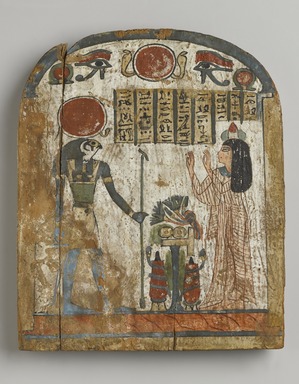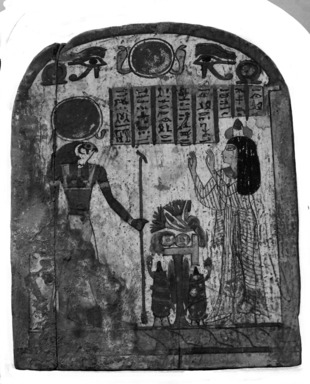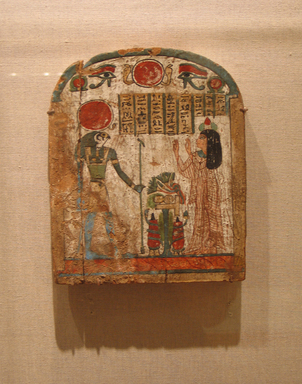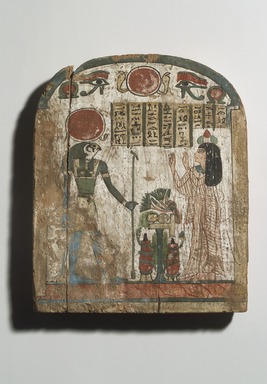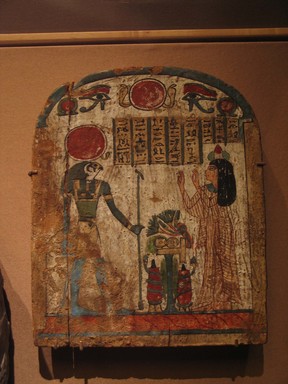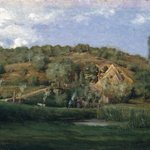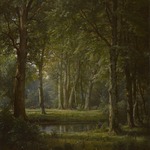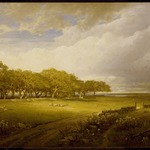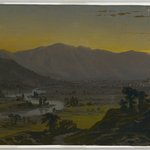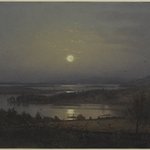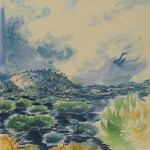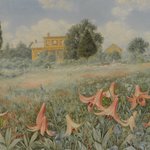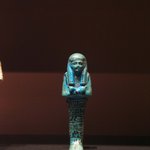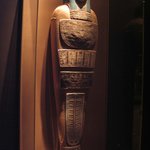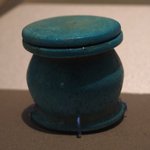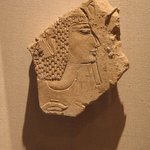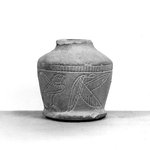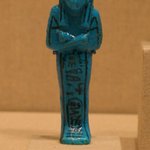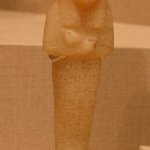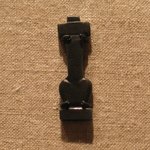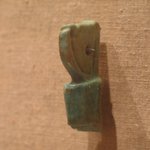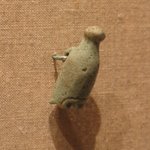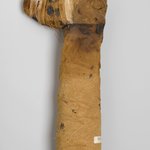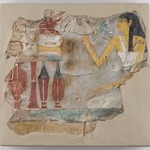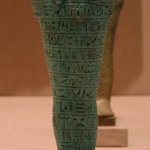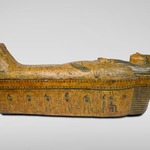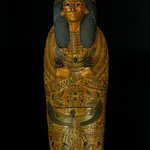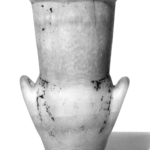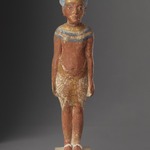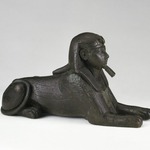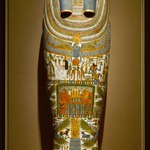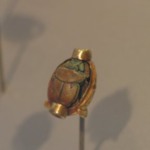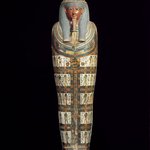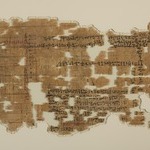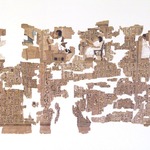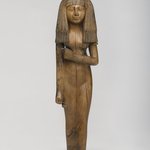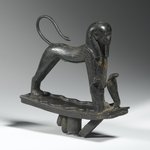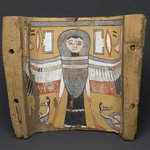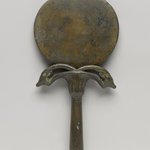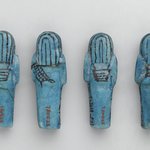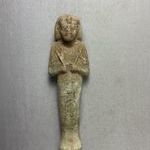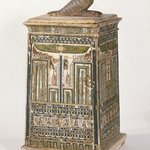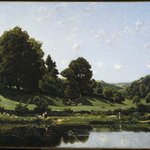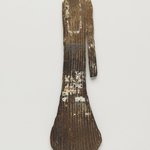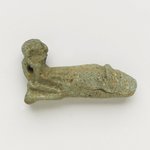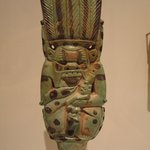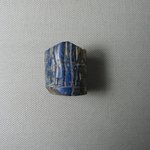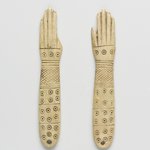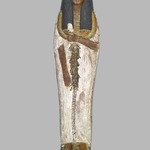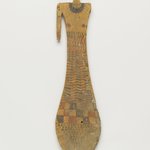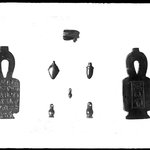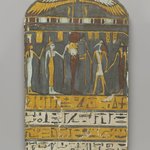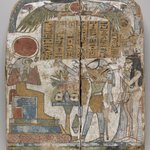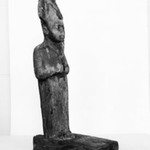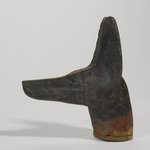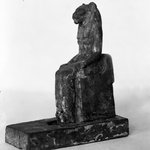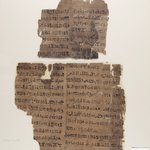Funerary Stela of Thenet
Egyptian, Classical, Ancient Near Eastern Art
On View: Funerary Gallery 2, Martha A. and Robert S. Rubin Gallery, 3rd Floor
Both of these stelae depict a woman entering the afterlife and approaching or worshipping a god or gods who control entrance to the next world. Both women have yellow skin representing the golden skin of a goddess, thereby indicating that they have resumed their original gender after rebirth and entered the afterlife as women. Gender transformation has ended for them.
Details of these stelae reveal the gods who control entrance to the next world. In Stela of the Lady of the House, Hery-ib-Neith, the deceased is led by the god Thoth, who guides her into the presence of the other gods. Here she meets Rehorakhty (a form of Horus) as well as the goddesses Isis and Nephthys. Isis raised her son Horus with the help of her sister Nephthys. This scene suggests that the deceased, too, is tended by these goddesses after her rebirth.
Stela of the Lady of the House and Singer, Thenet, depicts another step in the entrance process: Thenet raises her hands in worship to Rehorakhty.
MEDIUM
Wood, stucco, pigment
DATES
ca. 945–712 B.C.E.
DYNASTY
Dynasty 22 (probably)
PERIOD
Third Intermediate Period
ACCESSION NUMBER
37.1385E
CREDIT LINE
Charles Edwin Wilbour Fund
PROVENANCE
Archaeological provenance not yet documented, reportedly from Thebes, Egypt; by 1852, collected in Egypt by Henry Abbott of Cairo, Egypt and New York, NY; 1859, purchased from Henry Abbott by the New-York Historical Society, New York, NY; 1937, loaned by the New-York Historical Society to the Brooklyn Museum; September 1948, purchased from the New-York Historical Society by the Brooklyn Museum.
Provenance FAQ
CATALOGUE DESCRIPTION
Round-topped painted wooden stela inscribed for a Chantress of Amun. The owner is shown, to the right, facing left towards Re-Horakhty. Between the two figures is a table with offerings. Above the two figures are inscriptions.
Condition: The stela is composed of two wooden planks, the greater representing some ¾ of the total width. The smaller is dowelled to the larger. The seam was filled and covered, as was the rest of the piece, by a layer of gesso, upon which the painting was executed. The body of Harakhte is built up by means of an underlying layer of blue frit; this was also apparently used whenever a dark green color was desired (i.e. the topmost border; the offering table). The seam mentioned above has now opened, due to contraction and expansion. The left hand margin of the piece has also suffered major paint losses, especially in the figure of Harakhte. There is also paint loss at the apex of the stela. The white ground and some of the reds have been practically rubbed away-most especially the background. Once gessoed on the edges-almost all is lost, save a small patch on the upper right hand corner. The colors have remained fairly brilliant-the dark black of the wig, the red brown of the sun disk, the dark and light greens and the lighter pink under the base line are all in good condition. The stela is unvarnished, but bears a modern coating of polyvinyl-acetate.
CAPTION
Funerary Stela of Thenet, ca. 945–712 B.C.E. Wood, stucco, pigment, 10 1/8 x 8 1/4 in. (25.7 x 21 cm). Brooklyn Museum, Charles Edwin Wilbour Fund, 37.1385E. Creative Commons-BY (Photo: Brooklyn Museum, 37.1385E_PS4.jpg)
IMAGE
overall, 37.1385E_PS4.jpg. Brooklyn Museum photograph, 2016
"CUR" at the beginning of an image file name means that the image was created by a curatorial staff member. These study images may be digital point-and-shoot photographs, when we don\'t yet have high-quality studio photography, or they may be scans of older negatives, slides, or photographic prints, providing historical documentation of the object.
RIGHTS STATEMENT
Creative Commons-BY
You may download and use Brooklyn Museum images of this three-dimensional work in accordance with a
Creative Commons license. Fair use, as understood under the United States Copyright Act, may also apply.
Please include caption information from this page and credit the Brooklyn Museum. If you need a high resolution file, please fill out our online
application form (charges apply).
For further information about copyright, we recommend resources at the
United States Library of Congress,
Cornell University,
Copyright and Cultural Institutions: Guidelines for U.S. Libraries, Archives, and Museums, and
Copyright Watch.
For more information about the Museum's rights project, including how rights types are assigned, please see our
blog posts on copyright.
If you have any information regarding this work and rights to it, please contact
copyright@brooklynmuseum.org.
RECORD COMPLETENESS
Not every record you will find here is complete. More information is available for some works than for others, and some entries have been updated more recently. Records are frequently reviewed and revised, and
we welcome any additional information you might have.
What is the significance of the bird head? I see so many of them! Why a bird?

In this particular case, what you're seeing is a version of the god Horus known as Re-Horakhty. Horus is usually depicted a a falcon-headed man and was a symbol of kingship over all Egypt. The sun disk on his head, here, identifies him as Re-Horakhty who was closely associated with the cycles of the sun.
Because they can fly, birds were associated with the sky and celestial bodies. The name Horus is even derived form words meaning high or above.
Thanks!
Tell me more.
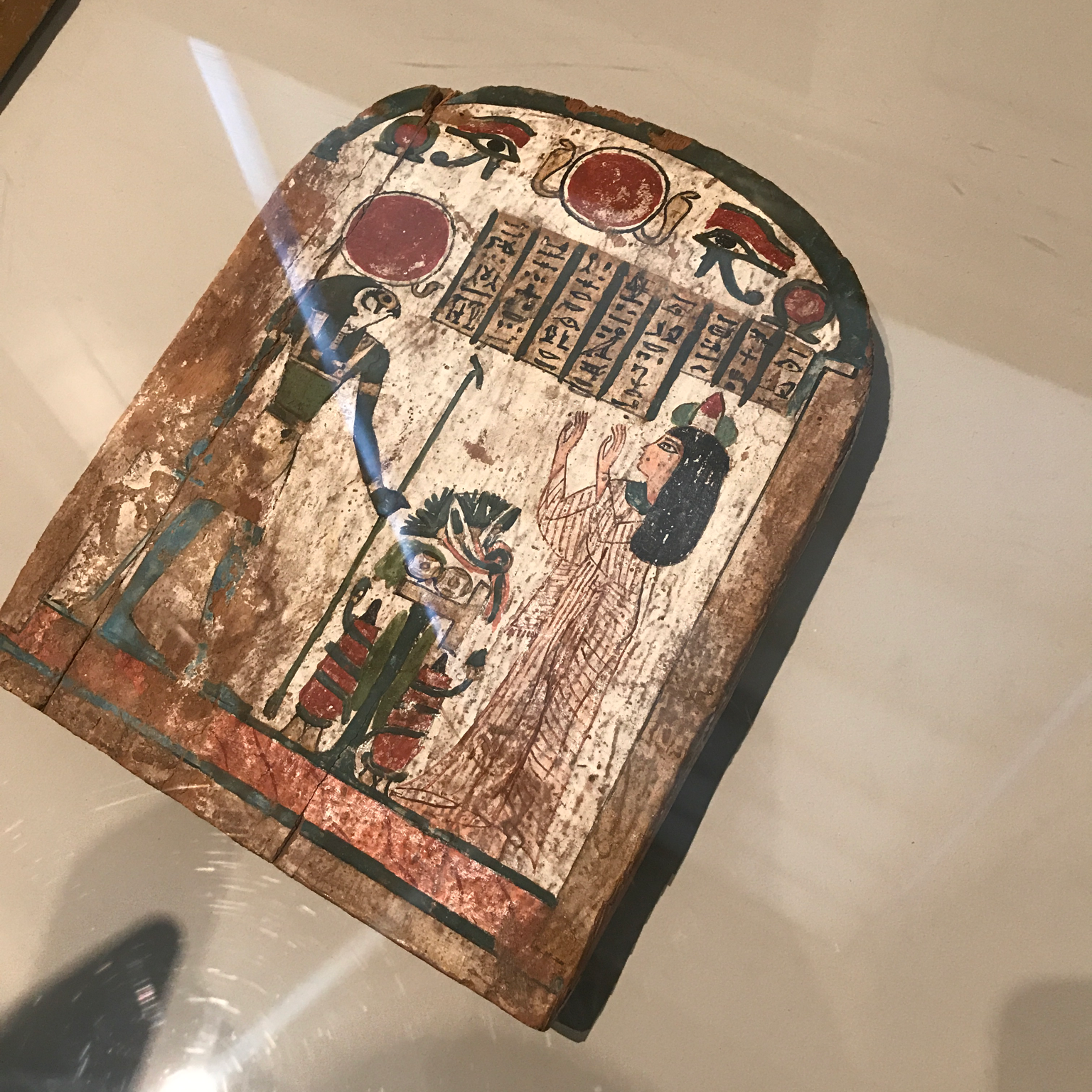
This stela belongs to a woman named Thenet, she is depicted on the right wearing a white linen dress and a fragrant cone on her head. Her arms are raised in praise as she makes offerings to the god Re-Horakhty while on her journey to the afterlife.
What did ancient Egyptians use for paint brushes? I often find myself marveling at the delicate line quality they achieved.
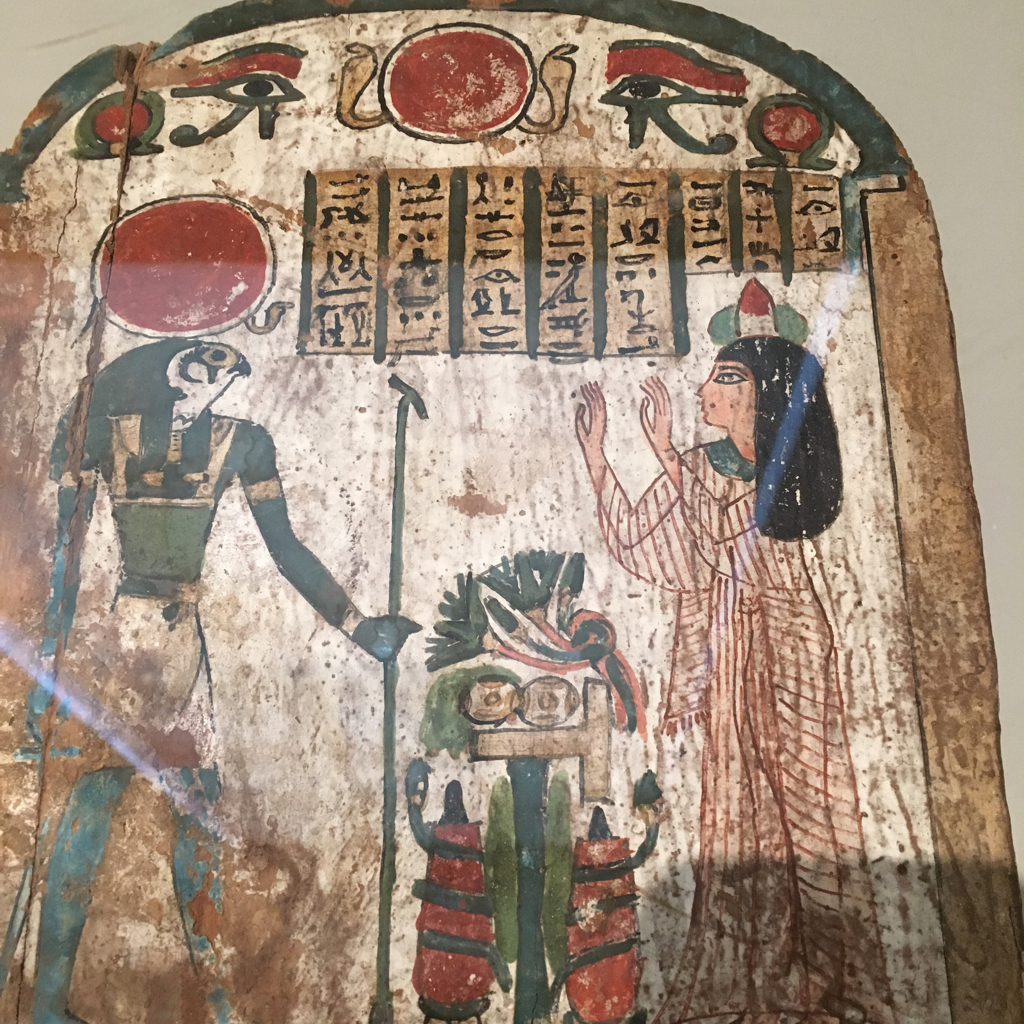
I agree, the linework they achieved was extraordinary! One of the most common tools used in ancient Egypt was reed brushes.
Thanks!
What god is this?
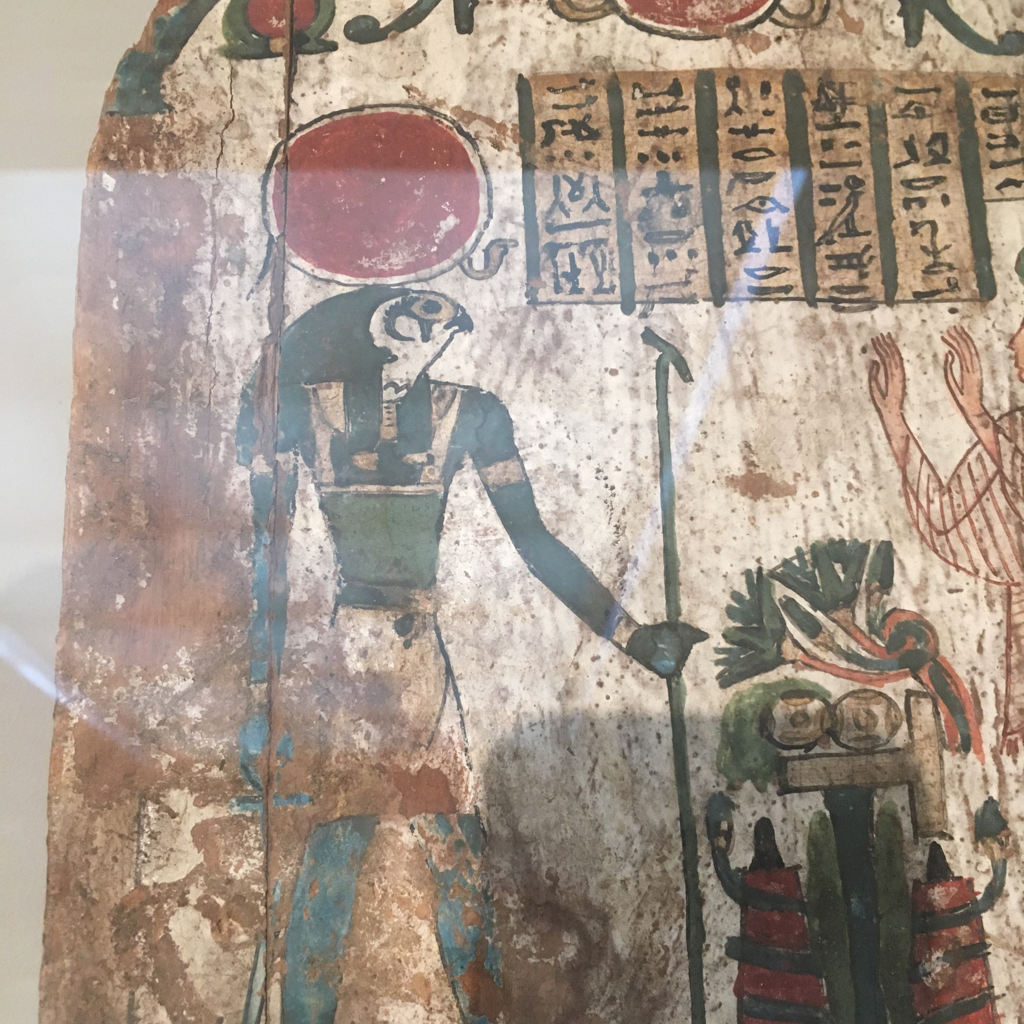
This is Re-horakhty, he's like a combination of Re and Horus. Here, Thenet (the woman on the right) is giving him offerings so that he will help her on her journey to the afterlife.
